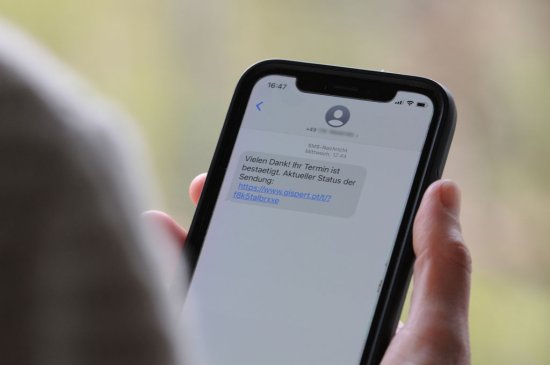
If you have received a peculiar text with an unfamiliar URL that claims to be about a delivery from USPS, be careful: It could be a scam.
If you have received a peculiar text with an unfamiliar URL that claims to be about a delivery from the United States Postal Service (USPS) but haven’t signed up for a tracking request, be careful: It could be a scam, the postal service warned.
The United States Postal Inspection Service (USPIS) said in a press release last week, which USPS posted on X Tuesday, that this type of text is a scam called smishing—a form of phishing involving a text or phone number. These scammers often try to present themselves as a government agency, bank, or other company and attempt to lure the recipient into sharing their personal or financial information, such as account usernames and passwords, Social Security numbers, date of birth, and credit and debit card numbers, according to the press release. Scammers can then use that information to commit other crimes, such as financial fraud.
[time-brightcove not-tgx=”true”]“The Postal Service offers free tools to track specific packages, but customers are required to either register online, or initiate a text message, and provide a tracking number. USPS does not charge for these services!” USPIS said in the press release. “USPS will not send customers text messages or e-mails without a customer first requesting the service with a tracking number, and it will NOT contain a link. So, if you did not initiate the tracking request for a specific package directly from USPS and it contains a link: don’t click the link!”
Read More: Why Gen Z Is Surprisingly Susceptible to Financial Scams
USPS advised the public to report any smishing incidents by copying the body of the text message and pasting it into an email to spam@uspis.gov—without clicking on any links—along with providing your name and a screenshot of the text that shows the phone number of the sender and the date it was sent. If you have been impacted by the scam—for instance, if you clicked the link, lost money, provided any personal information, or if your credit has been affected—should share those details in their email. You can also forward the texts to 7726, which will help with reporting the scam phone number.
USPIS also offered some tips to protect yourself from smishing, including:
- Think—confirm the sender’s identity and think about why the sender is asking for your information
- Don’t reply—don’t click on any links, as doing so could install malware, take you to fake websites that appear real, and steal your personal information
- Report—contact the bank, government agency, or company that the scammer is pretending to be so that it can work with law enforcement to investigate the incident
- Delete text messages—real companies will not ask you to provide your personal information
- Block spam messages—you can call your carrier’s customer service number and tell them to “Block all text messages sent to you as email” or “Block all multimedia messages sent to you as email”
- Treat your personal information like cash—scammers can use your personal information to steal your money or open new accounts in your name
- Review your cell phone bill—report any unauthorized charges to your carrier
- Security updates—keep your security software and applications updated and be wary of text messages from unknown numbers
Get alerts on the biggest breaking news stories here